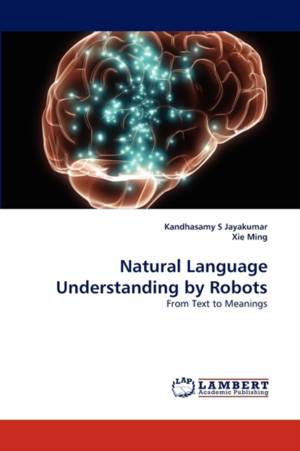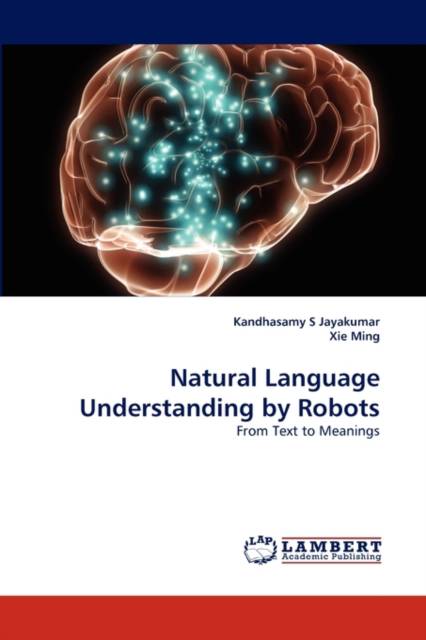
- Afhalen na 1 uur in een winkel met voorraad
- Gratis thuislevering in België vanaf € 30
- Ruim aanbod met 7 miljoen producten
- Afhalen na 1 uur in een winkel met voorraad
- Gratis thuislevering in België vanaf € 30
- Ruim aanbod met 7 miljoen producten
Natural Language Understanding by Robots
From Text to Meanings
Kandhasamy S Jayakumar, Xie Ming
Paperback | Engels
€ 75,45
+ 150 punten
Omschrijving
This book discusses the design and implementation of a mind or mental architecture for a machine to autonomously learn, analyze and synthesize spatial language. A new direction is taken to model the spatial language in a deterministic way using entities properties and their interactions. The spatial words such as on, in, over, under, above, below, inside, outside, behind, in front of, back, front, left, right, beside, between, among, near and far are modeled and learned. In contrast, current works use collocation information of words to learn the spatial concepts. The book discusses the spatial language understanding, spatial language generation and spatial language visualization methodologies as simple as possible. This book is very useful for those who work in the areas of robotics, natural language understanding, human-machine interaction, symbol grounding, spatial language visualization and text to 3D scene conversion.
Specificaties
Betrokkenen
- Auteur(s):
- Uitgeverij:
Inhoud
- Aantal bladzijden:
- 128
- Taal:
- Engels
Eigenschappen
- Productcode (EAN):
- 9783838385440
- Verschijningsdatum:
- 19/07/2010
- Uitvoering:
- Paperback
- Afmetingen:
- 152 mm x 229 mm
- Gewicht:
- 200 g

Alleen bij Standaard Boekhandel
+ 150 punten op je klantenkaart van Standaard Boekhandel
Beoordelingen
We publiceren alleen reviews die voldoen aan de voorwaarden voor reviews. Bekijk onze voorwaarden voor reviews.










